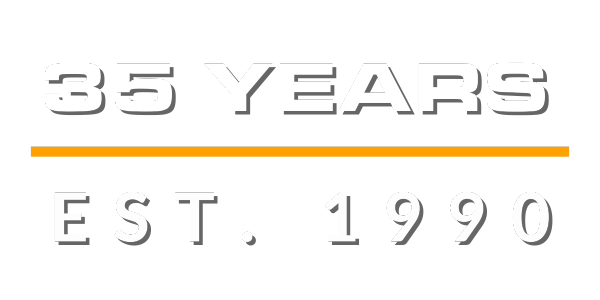6. UNPACKING THE OPERATING COSTS - A KEY FACTOR IN THE TCO OF CONSTRUCTION EQUIPMENT
Introduction
In the construction sector, the economic life and average lifespan of equipment are critical factors that influence financial decisions. The industry's shift towards strategic asset management, including the purchase of used machinery, necessitates a deeper understanding of operation costs within the Total Cost of Ownership (TCO). This discussion will provide an enhanced perspective on the economic life of construction equipment and will include more elaborate case studies that demonstrate the real-world implications of operation costs on the TCO for both new and used equipment.
2. Definition of Terms
- Depreciation: The measurable decline in an asset's value over time.
- Maintenance and Repair (M&R): The routine and corrective actions taken to ensure the functionality and longevity of equipment.
- Lifecycle: The duration from equipment acquisition to disposal.
- Residual Value: The estimated value of an asset at the end of its useful life.
Economic Life and Average Lifespan of Construction Equipment
The economic life of construction equipment is the period during which the machinery can operate cost-effectively. The average lifespan, however, refers to the total duration the equipment remains functional, regardless of cost implications. Determining the economic life is crucial as it can greatly influence the TCO:
- New Equipment: Typically, new machinery offers an extended economic life due to advancements in technology and efficiency. The average lifespan might range from 10 to 15 years, depending on usage and maintenance.
- Used Equipment: Used equipment from dealers like Rhino Machinery can provide a shorter but more cost-effective economic life. The average lifespan may not significantly differ from new models but is often purchased later in the life cycle.
The intersection where the cost to operate exceeds the value provided is the endpoint of economic life. This threshold is essential for stakeholders to determine when to retire or replace equipment.
Maintenance and Repair Costs
- Routine Maintenance: Adherence to the manufacturer’s recommended service intervals is essential. These often include engine oil and filter changes, hydraulic system and oil and filter changes, and the servicing of air filters and fuel filters.
- Fluid Management: Use high-quality lubricants and fluids that meet manufacturer specifications to help prevent premature wear and tear. Analyzing your oil and hydraulic fluids regularly can give you insight into the internal condition of engines and hydraulic systems, forecasting potential issues.
- Corrective Repairs: Entail fixing breakdowns and replacing worn parts. Special attention should be paid to components that are known to fail or degrade with time and use, such as seals and gaskets. Newer models may see lower frequency but higher costs due to advanced technology parts. Used equipment might see higher frequency but the parts could be more widely available and less expensive.
For construction companies, routine maintenance is a significant part of the operational workflow. Proactive and predictive maintenance strategies can reduce the likelihood of costly repairs and downtime. By implementing a robust routine maintenance program, especially for used equipment, companies can maintain the functionality and reliability of their machinery, ensuring that projects are completed on time and within budget.
Fuel Efficiency
Technological Advances: Newer machines boast improvements in fuel efficiency due to stricter environmental regulations and newer engine designs.
Usage Patterns: How equipment is used significantly affects fuel consumption. Training on how to operate machine properly can help you save in fuel costs, such as avoiding aggressive acceleration and adhering to correct operating speeds. Used equipment may consume more fuel than new models, but the difference in efficiency must be weighed against the price differential.
Environmental Considerations: The environment and the season should always be taken into consideration if you are planning ahead on operational costs. A thing to keep in mind is that cold weather increases fuel consumption as engines take longer to reach optimal operating temperatures.
Tires and Undercarriage
In the used heavy equipment market, the condition of the tires and undercarriage is a critical consideration when estimating the value and potential operational costs of machinery. Tires and undercarriage also impact you fuel efficiency and maintenance requirements.
Tires: Incorrect tire pressure and misalignment can lead to increased wear and reduce the life expectancy of the tires. Having properly inflated and well-maintained tires will reduce rolling resistance, which will significantly reduce fuel consumption. Choosing the right tire for the job is another factor to consider when you are trying to minimize operational costs. Consider factors such as terrain (mud, rock, asphalt), load capacity (GVWR) and tire tread pattern.
Undercarriage: The undercarriage accounts for a significant portion of the total maintenance cost for tracked machines. The wear of undercarriage parts can be accelerated by harsh operating conditions, which will increase operational costs. Proper alignment and tension will significantly help minimize wear. A balanced approach to replacing undercarriage components can reduce overall costs. Replacing individual worn parts can be more cost-effective than waiting for a complete undercarriage overhaul.
4. How Operation Costs Impact TCO
Operation costs directly affect the profitability of construction projects. They can be unpredictable, fluctuating with the cost of raw materials (like rubber for tires), fuel prices, and labor rates for maintenance. These costs can make up a significant portion of the TCO and have a direct correlation with the equipment's lifecycle value.
For example, a new bulldozer might have a high upfront cost but lower operation costs due to better fuel efficiency and reduced maintenance needs. On the other hand, a used bulldozer would have a lower acquisition cost, but potentially higher operational costs.
Calculating Operating Costs
Formulas to Consider
Per Hour Operating Cost: (Total Operating Expenses / Total Hours of Operation)
Per Project Operating Cost: (Total Operating Expenses / Number of Projects Completed)
Seasonal and Geographical Factors
Seasonal Fluctuations: Maintenance and fuel consumption can vary by season.
Geographical Variables: Operating costs can be affected by the region’s climate, terrain, and local fuel costs.
Depreciation and Resale
Depreciation is slower for used equipment, so the loss of value over time is less compared to new equipment, which depreciates faster initially. This affects the TCO, as the residual value at the time of resale is a key component. Used equipment tends to retain a more consistent market value after the initial purchase.
Case Studies
Case Study 1: Economic Life of New vs. Used Excavators
A construction firm purchased new excavators for their fleet and used models from Rhino Machinery. Over five years, the new excavators showed an average operational cost of $25 per hour, including fuel, maintenance, and repairs, with a projected economic life of 12 years. The used excavators presented an operational cost of $35 per hour with a conservative economic life of 7 years due to earlier onset of increased maintenance and repair costs.
Despite higher operational costs, the used equipment had a 30% lower acquisition cost. The TCO per hour over the economic life for new equipment was $45, while for used equipment it was $40. The lower upfront investment and respectable economic life made the used equipment a cost-effective choice.
Case Study 2: Fleet Renewal Analysis for a Major Contractor
A major contractor operating a fleet of dozers performed a renewal analysis. They compared the cost of maintaining aging dozers versus replacing them with newer used models from Rhino Machinery. The operation costs of old dozers were rising sharply, averaging $55 per hour, with a remaining economic life of just 2 years.
The replacement used dozers had a stable operational cost of $30 per hour, with an economic life of 8 years. The analysis concluded that replacing the older dozers would result in a TCO savings of 20% over the next five years, factoring in resale value and depreciation.
5. Strategic Recommendations
- Lifecycle Cost Analysis: Conduct regular lifecycle cost analyses to identify the most cost-effective point to replace equipment.
- Maintenance Programs: Invest in comprehensive maintenance programs for used equipment to extend its life and efficiency.
- Fuel Management: Implement fuel management practices to monitor and reduce fuel consumption.
- Training: Operator training is vital in maximizing fuel efficiency and minimizing wear on tires and undercarriage components.
6. Conclusion
For stakeholders in the construction sector, particularly those considering Rhino Machinery's inventory of used equipment, the insights into economic life and operation costs are not just academic but pivotal to financial strategy. The nuanced understanding that used machinery may not only offer a lower initial investment but can also yield competitive operational longevity reinforces Rhino Machinery's value proposition. The case studies validate the tangible benefits of opting for quality used equipment, where the balance of purchase price, operational costs, and economic life converges to present a compelling argument for cost-conscious construction companies.
Rhino Machinery's commitment to providing reliable used equipment is rooted in the recognition that the TCO is influenced significantly by operational expenses over time. By capitalizing on the lower depreciation rates, reduced upfront costs, and reasonable operational expenses of used machinery, companies can leverage these assets to achieve economic efficiency without compromising on productivity. The conclusion drawn is clear: in the dynamic and cost-driven world of construction, Rhino Machinery stands as a partner for those seeking to maximize their investment through strategic equipment choices that favor the savvy economics of pre-owned machinery.





